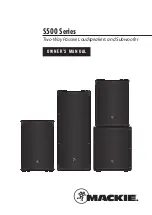
11
• Connect the supply cable into a 220 V outlet.
• Go to a Authorized Service Center
to repair.
• Go to a Authorized Service Center
to repair.
• Go to a Authorized Service Center
to repair.
• Go to a Authorized Service Center
to repair.
• Examine and remove the blockage.
• Go to a Authorized Service Center
to repair.
• Check the connections. Turn ON the compressor.
• Go to a Authorized Service Center
to repair.
• Remove the blockage, clean and stretch the hoses.
• Go to a Authorized Service Center
to repair.
• Set the nozzle close to the work piece.
• Clean or replace the nozzle.
• Replace the electrode.
• Examine and clean or replace the torch components.
• Set correctly the ground clamp in the work piece.
• Set the ground clamp correctly in the work piece.
• Go to a Authorized Service Center
to repair.
• Verify the pneumatic installation and the compressor.
• Connect the supply cable into a 220 V outlet.
• Replace the fuse.
• Go to a Authorized Service Center
to repair.
• Check the power supply voltage with a voltmeter.
• Wait until the equipment cools down.
• Go to a Authorized Service Center
to repair.
The power indicating
light is not ON after
turning ON the
equipment.
The fan is not working
after tuning ON the
equipment.
The low-pressure
indicator is ON.
The torch is not cutting
or there is not plasma
out.
There is not response
when pressing the
torch trigger.
No response after
starting the
equipment.
The protection
indicating light is ON.
• Input voltage is not 220 V
• The light is not working .
• The fuse is blown.
• The power supply switch is not working.
• The control dashboard or the cutter are
damaged.
• The fan is blocked.
• The fan is damaged.
• The transformer is damaged.
• There is no compressed air entry.
• The air valve is closed or broken.
• The air or gas pressure circuit is blocked.
• The air or gas valve is damaged.
• The space between the nozzle and the
work piece is too big.
• Nozzle is dirty, damaged or blocked.
• Worn electrode.
• Torch components are dirty or damaged.
• Grounding clamp is positioned wrong.
• The grounding clamp is not set correctly.
• The trigger, dashboard or transformer are
damaged.
• There is no air in the pneumatic line.
• The feeding cable is not connected
properly.
• Damaged fuse.
• Damaged switch, dashboard or
transformer.
• The power supply configuration is
incorrect.
• Overheating due to excessive work cycle.
• The thermal relay is damaged or the main
dashboard is out of order.
Problem
Cause
Solution
Troubleshooting
ENGLISH
If the problems persist despite making the recommended corrective actions or there are other problems contact a
Authorized Service Center.




































